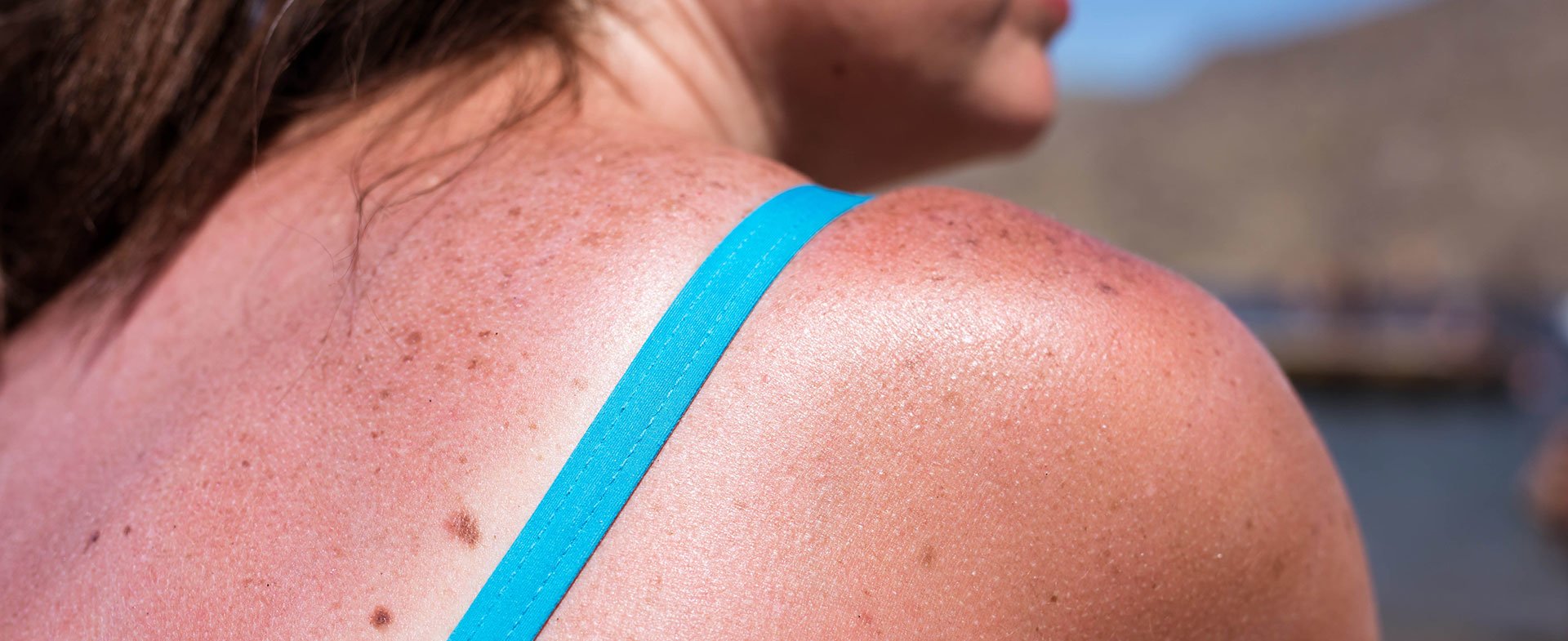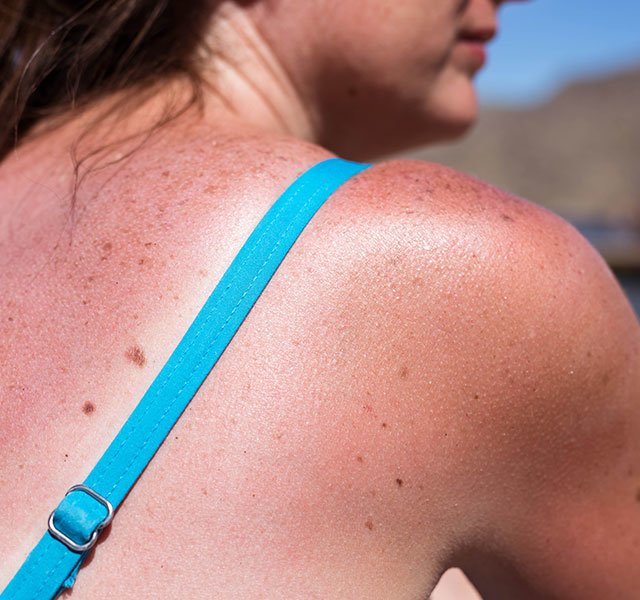You know the sun-safety rules: Use a generous amount of broad-spectrum sunscreen reapply every 2 to 3 hours (more often if you’re swimming or sweating), and stay out of direct rays in peak hours. But sometimes life gets in the way. You forget, miss a crucial spot, fall asleep poolside, or get caught up in a killer game of beach volleyball. You might not even realize you got burned until long after the fun is over.
“Unfortunately, pain and peeling aren’t the only complications of sunburn. It comes with some long-term consequences,” explains Jungho Kwon, M.D., a dermatologist at Henry Ford Health. “UV damage not only speeds up the aging process, making you more likely to develop wrinkles, freckles and broken capillaries, it also increases your risk of skin cancer.” In fact, according to the Skin Cancer Foundation, the risk for melanoma, the most deadly form of skin cancer, doubles after more than five sunburns.
Still, once the damage is done, it’s important to focus on healing fast. For serious burns (think blistering, red skin), get to the doc stat. Treating mild to moderate sunburn is about taking out the sting and minimizing pain and swelling. Dr. Kwon has 6 strategies to soothe sunburn:
- Get out of the sun. If you’re burned already, get out of the sun to prevent further sun damage. If you can’t get indoors, keep burned areas covered with a hat and lightweight, preferably UV-protective clothing.
- Apply a cold compress. Make these by soaking a clean cloth in a bowl with equal parts ice cubes and water. Then hold the cloth on the burned area for five minutes. Repeat three times. The cold temps constrict blood vessels and reduce swelling.
- Get some meds. Pop an aspirin, ibuprofen or another non-steroidal anti-inflammatory medication to ease pain and reduce swelling. A hydrocortisone cream can help take the edge off, too.
- Slather on moisturizer. Whether your skin is newly burned or already peeling, moisturizer helps promote healing. Moisturizers and gels that contain aloe are particularly beneficial (aloe is a plant chemical that helps reduce inflammation). Store it in the fridge and you’ll get the added bonus of soothing cold temps and reduced swelling.
- Take a lukewarm bath. To maximize the healing power of your bath, put oatmeal in an old sock, tie it closed then run a bath with the oatmeal sock in it. The oatmeal is soothing for the skin and the sock keeps your drain from getting plugged up.
- Drink up. Sunburns dry more than your skin. Drinking liquids helps rehydrate your body and replenish lost fluids from the sun. You can even sip iced tea with mint for an added antioxidant punch.
After you survive getting fried, do your best to employ sun-safe strategies. Stay out of the sun between peak hours of 10 a.m. and 4 p.m., and when you are outside, cover up or find some shade. Rub on sunscreen, wear protective gear such as sunglasses and a broad-brimmed hat, and when you’re not in the water, sport lightweight shirts, long swim shorts and water shoes.
“If you develop blisters, resist the urge to pop them, which can slow the healing process and increase your risk of infection,” says Dr. Kwon. “Instead, lightly cover the blisters with gauze, keep the area clean with soap and water and apply an antibiotic cream. And make an appointment with your doctor to be safe.”
To find a dermatologist at Henry Ford, visit henryford.com or call 1-800-HENRYFORD (436-7936).
Dr. Jungho Lee Kwon is dermatologist who sees patients at Henry Ford Medical Centers in Troy and West Bloomfield.



